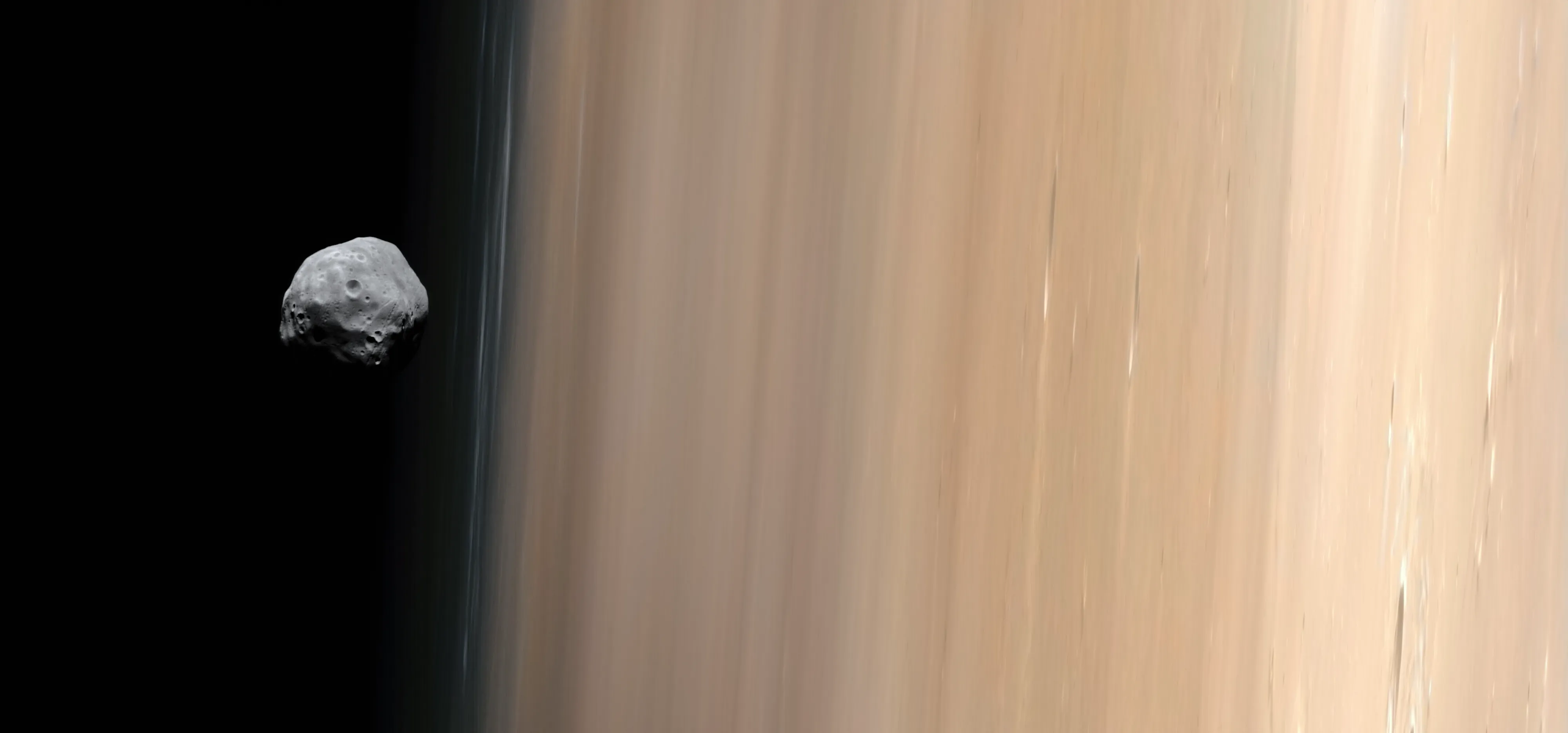Phobos Over Mars: A Captivating Glimpse from ESA's Mars Express
Space exploration continually delivers awe-inspiring visuals, and this particular image is no exception. Captured by the European Space Agency's (ESA) Mars Express orbiter and masterfully processed by Andrea Luck, it offers a dramatic silhouette of Phobos, Mars' larger and innermost moon, transiting across the Red Planet's rugged surface.
The Stunning View
The image presents Phobos as a distinct, irregularly shaped shadow against the ochre hues of Mars. What makes this view particularly unique is the apparent stretching of the Martian surface beneath Phobos. This intriguing effect isn't a distortion of Mars itself but rather a consequence of the High Resolution Stereo Camera (HRSC) instrument's scanning motion as it captured the satellite moving across its field of view. The resulting image is a single shot, not a composite, offering an authentic, albeit unusual, perspective.
 Credit: Processing: Andrea Luck CC BY; Raw Data: ESA/DLR/FUBerlin
Credit: Processing: Andrea Luck CC BY; Raw Data: ESA/DLR/FUBerlin
ESA's Mars Express: A Decade of Discovery
The Mars Express mission, launched in 2003, has been a cornerstone of ESA's planetary exploration efforts. Orbiting Mars since late 2003, it has provided an unprecedented wealth of data on the Martian atmosphere, surface, and subsurface, and its moons. The HRSC instrument, responsible for this stunning image, is renowned for its ability to create detailed 3D maps and high-resolution images of the Martian landscape. This particular observation was made on January 10, 2007, during orbit 3868.
Phobos: The Enigmatic Moon
Phobos, along with its smaller sibling Deimos, are Mars' two natural satellites. Phobos is roughly 22 kilometers (14 miles) across and orbits remarkably close to Mars, completing an orbit in just over 7 hours – faster than Mars rotates! Its irregular shape and cratered surface suggest it might be a captured asteroid rather than a moon formed alongside Mars.
While our Moon exerts significant tidal forces on Earth, Phobos's much smaller mass and proximity to Mars result in a different dynamic. It does exert a tidal effect, but it's leading to its slow, inevitable demise; Phobos is spiraling inwards and is predicted to either crash into Mars or break apart to form a ring system within tens of millions of years. This image serves as a powerful reminder of the dynamic dance between celestial bodies in our solar system.
The Art of Space Imaging
The original data for this image was sourced from ESA's Planetary Science Archive (PSA). Andrea Luck's expert processing involved colorizing the raw black and white data (specifically from product ID H3868_0000_S13.IMG), transforming scientific data into this breathtaking visual narrative. This process highlights the crucial role of image processors in making complex scientific data accessible and visually compelling to the public.
This image not only showcases the incredible capabilities of missions like Mars Express but also the beauty inherent in scientific discovery and the artistry involved in bringing it to life.




